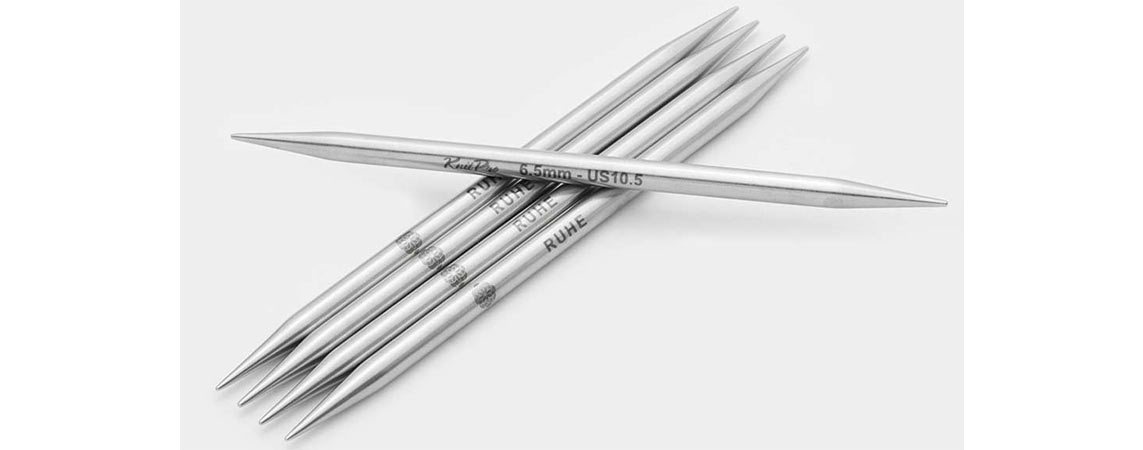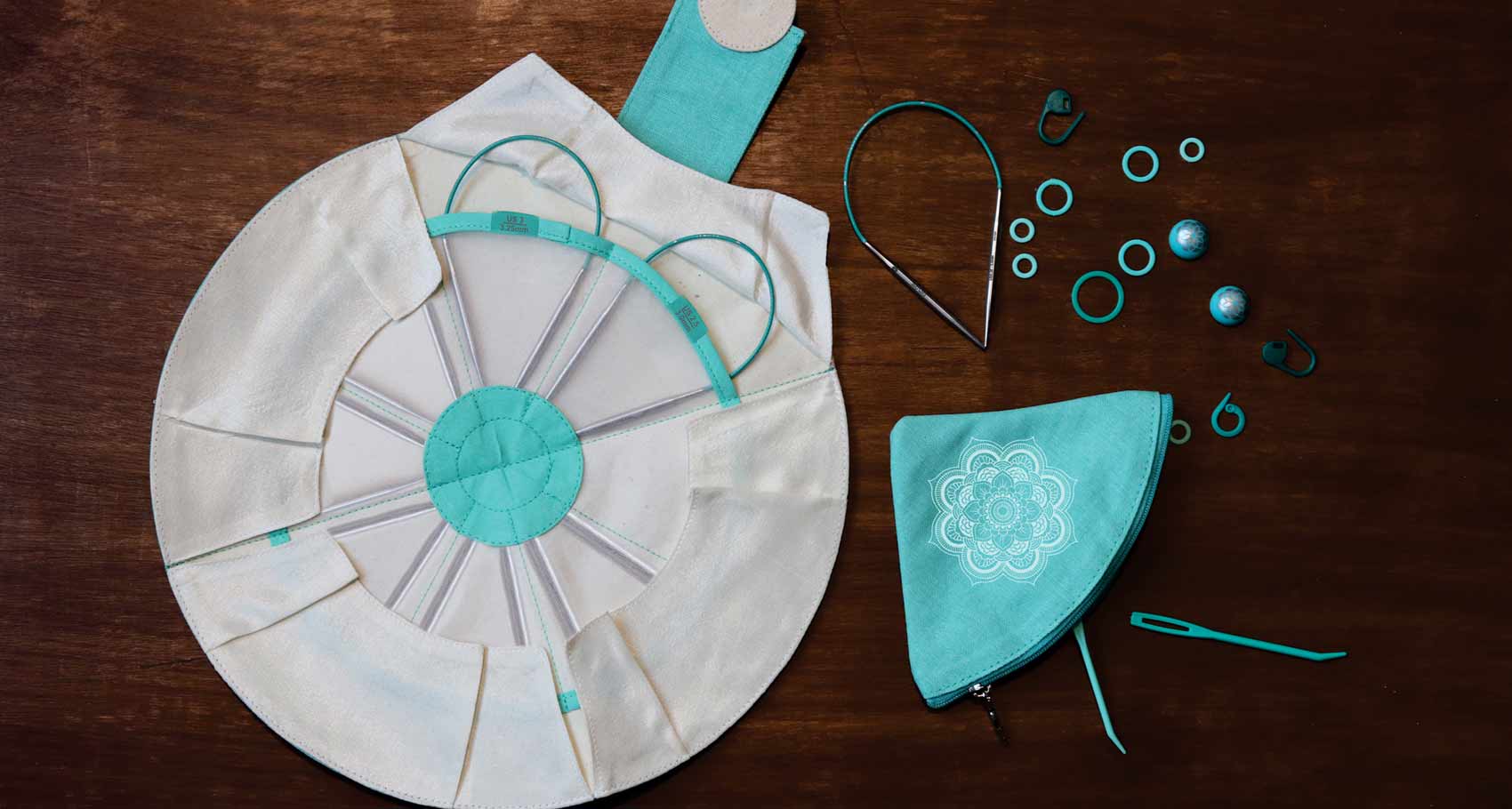Small circumference knitting is used for projects that are knit in the round with rounds of some 16 inches or sometimes, even less. Some of the most common, small circumference knitting projects are socks, mittens and gloves, infant-sized hats and, of course, sweater sleeves that are worked in the round, and even some bags or pouches.
Small, tubular items can be crafted with all of the popular knitting styles, be it either English Continental and Portuguese. It is not so much about how you hold and manage the yarn but more about how you arrange and move your stitches on a small circular knitting needle, like those from our Mindful Explore Set or on double pointed needles, e.g. the ones included in our grateful Set.
No matter which style of needle you are using, there are a couple of guidelines for small circumference knitting:
- You always knit in a closed round, so you're going to work around your piece without turning things over, as you would when you're knitting back and forth in rows.
- Small circumference knitting is always completed with the right side facing you, so you're looking at the outer side of your work
Knitting in the round on double pointed needles or dpns begins by arranging your stitches evenly around either three or four needles most of the time, and has its particular techniques and advantages.

Arranging your stitches on four needles can be especially helpful for projects like sock patterns, where half of the stitches in a round form the top of the foot and the other half of the stitches are at the bottom of the foot, which makes it so easy to follow your pattern without too many stitch markers.
Basically, in whatever stitch pattern you are using, you just slightly rotate your work to the next needle, with the other needles hanging loose, while you are working yourself across each needle at a time.
A much appreciated effect of knitting on double pointed needles is the soothing clicking sound the metal needles from our Mindful collection make. And if you have a simple pattern to follow, it may be very likely that you positively fall into a meditative, trance-like state when crafting your stitches on your Mindful dpns.
Knitting on double pointed needles however, is sometimes found to be tricky by many knitters and hence requires some practice, especially if you wish to knit more complicated patterns. Otherwise you will have laddered stitches at the beginning and end of each needle, which on smaller, tubular items may look somewhat wonky.
Lately, our Mindful dpns have won quite a big contender in our small, 10” circular needles from our Explore Set that have entered the scene and quickly won the hearts and hands of thousands of knitting enthusiasts.
While circular needles with longer cords can also be employed for larger projects, the needles of our Mindful Set of 10” circular knitting needles have one purpose only: creating small, neat circumferences. The fixed circulars come with a longer and a shorter needle as a working needle, which makes it even easier to knit the rounds effortlessly. The stitches are going to be held on the shorter side and you are just going to use the longer side to form your new stitches easily, fast and without any laddering.
One of the reasons these short circulars have become so popular is there are a lot less needles and yarn to maneuver and hang on to. On short circular needles, longer tubes, such as the bodies of socks, are usually produced way faster than on dpns, as you no longer have to readjust needles and yarn every time you make a new round. They are also great for producing the more complicated stitches, such as increases or decreases as well as complex patterns like lace stitches or color work.
On a very short circular needle you would knit your circumference in much the same way that you would knit larger projects in the round on longer cords. The circumference of your knitting, however, always needs to be close to the length of your needle.
The only time this could be problematic, is when you e.g. get to the fingers of a glove, where you are only knitting around very few stitches. So when working on a 10” circular needle, all of the stitches are held on that single needle. In these cases of creating really tiny pieces, such as fingers or little toes, double pointed knitting needles would still be your go-to tool.
Whatever method or knitting needles you opt for when it comes to knitting small circumferences, we hope you have liked our insights on working mindfully in the round on both double pointed or short, circular knitting needles. If you wish to dive deeper into the subject, also take a look at our blog on circular knitting here, and always remember: A little progress each day, adds up to big results!












